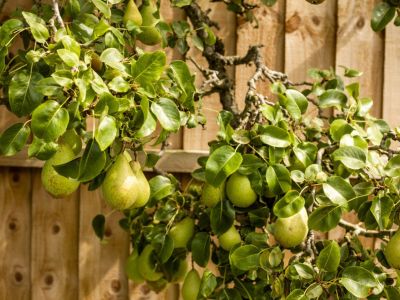Planting Fruit Trees in the Garden
With a little planning, you can soon be biting into juicy fruit from your own backyard fruit trees – including apples, cherries, plums and pears – even if you only have a small garden. Your first step is to evaluate your site’s soil and sun. Most fruit trees require good drainage and full sun to thrive. If your fruit tree garden ideas are huge but your yard area isn’t, consider selecting dwarf and semi-dwarf cultivars as your backyard fruit trees. While standard fruit trees grow 25 to 30 feet (7.6 to 9 m.) tall, dwarf and semi-dwarf fruit trees rarely get over 15 feet (4.57 m.) tall. These are also suitable for container growing.
Growing Fruit Trees
As you consider fruit trees in garden design, take your area’s climate into account. Just because your winters are cold shouldn’t crush your fruit tree garden ideas. In fact, many types of fruit require a certain number of chill hours, hours at 45 degrees F. (7 C.) or less, each winter to flower and fruit the next season. But you’ll have to pick trees and cultivars that are hardy in your area. Apples and pears, for instance, have excellent winter hardiness and can be grown in cooler climates.
Fruit Trees in Garden Design
As you map out your fruit tree garden design, remember that some types of trees are self-pollinating, but others require a similar tree in the area, or a different variety of the same species, to pollinate the fruit. If you can’t figure out from a tag whether a tree is self-pollinating, ask someone at the nursery. When the tree you like isn’t self-pollinating, see if your neighbors are growing fruit trees, and coordinate species. While you are visiting the nursery, ask about what fruit tree diseases are common to the region. Before you start planting fruit trees in the garden, you’ll want to understand the kind of work it will take to keep them healthy. Also, remember how important patience is when growing fruit trees. Your backyard fruit trees will not be dripping in fruit the first season. Apples, pears and plums, for example, don’t fruit until they are three years old, and sometimes not until they are five or six.
